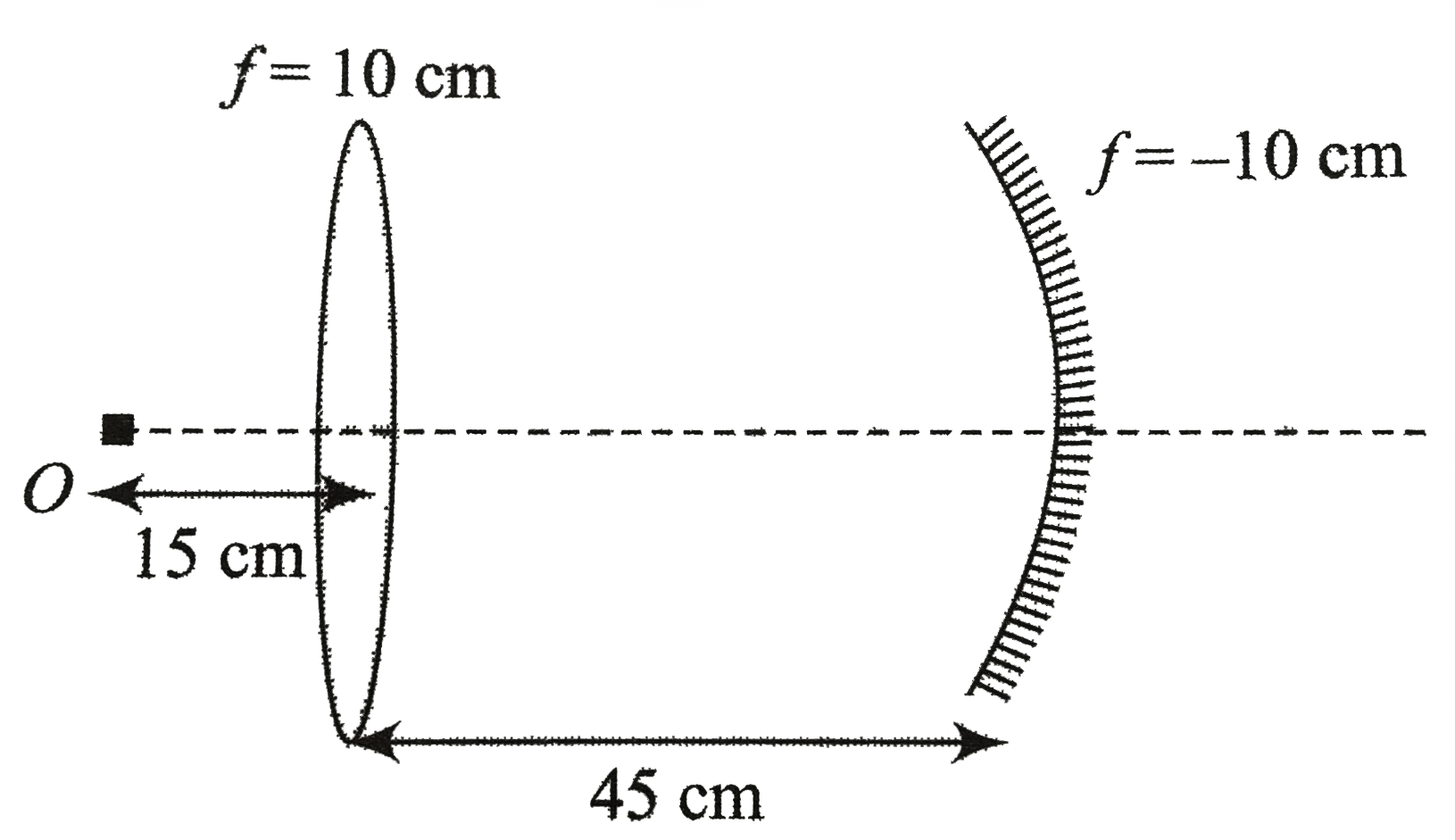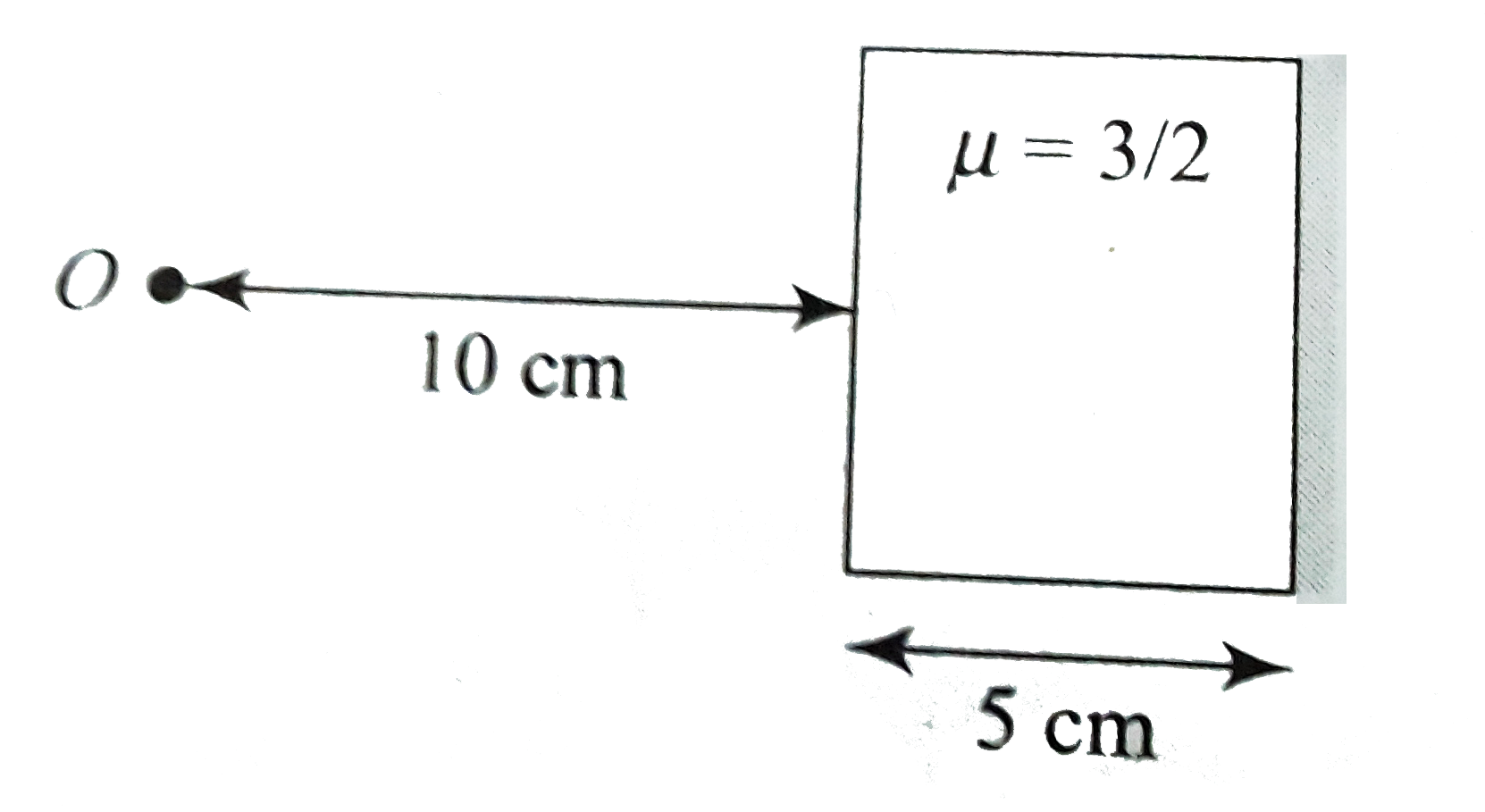In Figure., find the position of final image formed.

For convex lens :v1=uf(u+f)=−15×10−15+10=30cm
For concave mirror : u=−(43−30)=−15cm
1v2+1−15=1−10⇒v2=−30cm
Now, again for convex lens:
u−(45−30)=−15cm
⇒v3=−15×10−15+10=30cm
So, final image if formed at I3 at a distance of 30cm from the lens

Topper's Solved these Questions
- GEOMETRICAL OPTICSBOOK - CENGAGE PHYSICS ENGLISHCHAPTER - GEOMETRICAL OPTICSEXERCISE - Subjective
26 Videos
- GEOMETRICAL OPTICSBOOK - CENGAGE PHYSICS ENGLISHCHAPTER - GEOMETRICAL OPTICSEXERCISE - Single Correct
221 Videos
- GEOMETRICAL OPTICSBOOK - CENGAGE PHYSICS ENGLISHCHAPTER - GEOMETRICAL OPTICSEXERCISE - Exercise1.6
15 Videos
- ELECTRON,PHONTS,PHOTOELECTRIC EFFECT & X-RAYSBOOK - CENGAGE PHYSICS ENGLISHCHAPTER - ELECTRON,PHONTS,PHOTOELECTRIC EFFECT & X-RAYSEXERCISE - dpp 3.3
15 Videos
- HEATING EFFECT OF CURRENTBOOK - CENGAGE PHYSICS ENGLISHCHAPTER - HEATING EFFECT OF CURRENTEXERCISE - Thermal Power in Resistance Connected in Circuit
27 Videos
Similar Questions
An object is placed on the principle axis of a concave mirror of focal length 10cm at a distance of 21cm from it. A glass slab is placed between the mirror and the object as shown in figure.
Find the distance of final image formed by the mirror.

View Solution(a) Under what conditions is the phenomenon of total internal reflection of light observed? Obtain the relation between the critical angle of incidence and the refractive index of the medium.
(b) Three lenses of focal lengths +10cm,−10cmand+30cm are arranged coaxially as in the figure given below. Find the position of the final image formed by the combination.

(b) (i) Write a balanced equation showing nuclear fission of Uranium (23592U) nucleus.
(ii) In a nuclear reactor, what is the function of :
(a) Cadmium rods? (b) Graphite rods?
View SolutionAn object is placed 10cm away form a glass piece (n=1.5) of length 20cm bounded by spherical surfaces of radii of curvaure 10cm. Find the position of final image formed after two refractions at the spherical surfaces.

View SolutionA point ofject 'O' lies in front of the lens as shown in figure. Find the final position of image formed by the combined lenses.

View SolutionAn illuminated point object O is kept 20 cm from a thin convex lens L1 of focal length 15 cm as shown below. A thin diverging lens L2 of focal length 25 cm is kept co - axial with the first lens and 35cm from it, as shown in figure below :

Find the position of the final image formed by this combination of lenses.
View SolutionAn equiconvex lens, f1=10cm, is placed 40 cm in front of a concave mirror, f2=7.50cm as shown in Figure ., An object 2 cm high is placed 20cm to the left of the lens . Find the position of the final image is formed when leftward travelling rays once again pass through the lens. Find overall magnification.

View SolutionFind the positon of final images formed.
(The gap shown in figure of negligible width)

View SolutionA point is placed in front of thick plane mirror as shown in figure. Find the location of final image w.r.t. object.

View SolutionIf the optic axis of convex and concave lenses are separated by a distance 5mm as shown in the figure. Find the coordinate of the final image formed by the combination if parallel beam of light is incident on lens. Origin is at the optical centre of convex lens

View SolutionAn object is placed between a plane mirror and a concave mirror of focal length 15 cm as shown in Figure . Find the position of the images after two reflections.

View Solution
